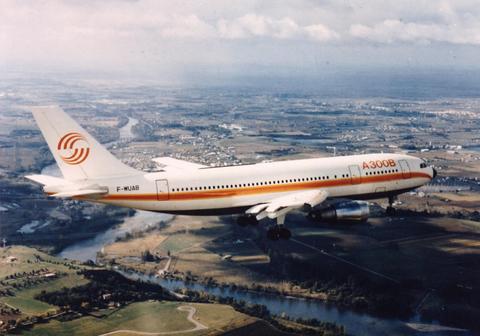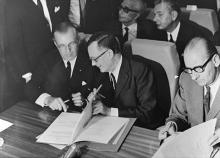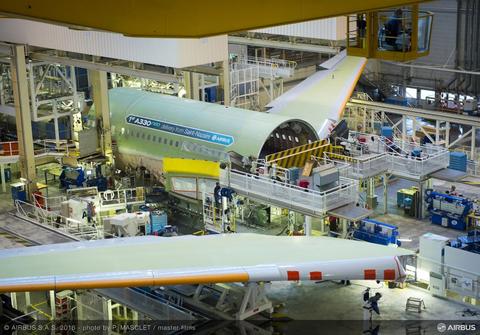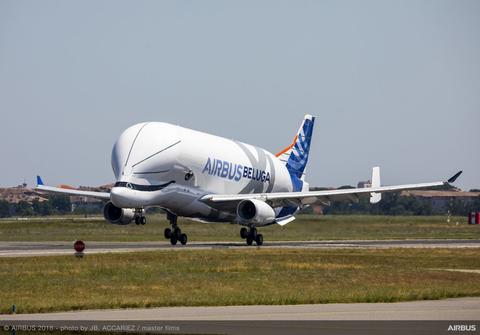2017 marked new achievements and key milestones for Airbus’ family of single-aisle and wide-body aircraft. Including the single largest commercial jetliner announcement in the company’s history.
Wide-body jetliner achievements included delivery of the 100th A350 XWB – an A350-900 variant; the Type Certification of the longer-fuselage A350-1000, clearing the way for the initial customer delivery by year-end; and the first flight of the A330neo, kicking off some 1,400 hours of airborne flight evaluations.
For the single-aisle product line, the A319neo new engine version made its maiden flight equipped with CFM International LEAP-1A engines; the first-ever A321neo was provided to an operator; and a U.S.-produced A321 became the 1,500th Airbus commercial aircraft in North American service.
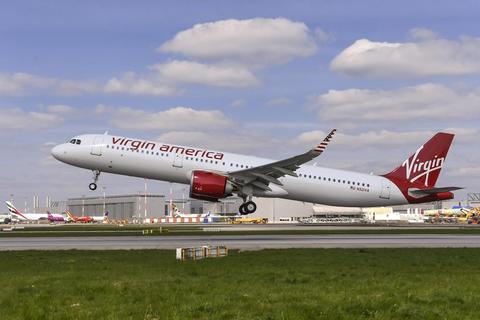
The A350 XWB: new operators and a milestone delivery
The A350 XWB operator base increased in 2017 with several airlines adding the latest member of Airbus’ wide-body product line to their fleets.
Among the carriers taking delivery of the new-generation jetliner this year were Singapore Airlines, Qatar Airways, Cathay Pacific, Delta Air Lines and Lufthansa. By the end of October, 58 A350 XWB aircraft had been delivered during the year.
Airbus celebrated a major programme achievement in July with delivery of the 100th A350 XWB to long-time customer China Airlines.
The carrier received their milestone aircraft some 30 months after the first A350 XWB delivery – showcasing the fastest wide-body production ramp-up in Airbus’ history.
In November, Malaysia Airlines became the 17th and latest operator to receive the efficient twin-engine wide-body airliner when it took delivery of its first A350-900 version on lease from Air Lease Corporation.
This was part of an order placed by the U.S.-based leasing company for 29 A350 XWB Family aircraft.
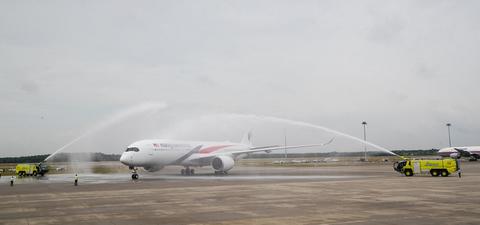
The A350-1000 is cleared for service
The A350-1000 stretched-fuselage version of Airbus’ A350 XWB Family aircraft received Type Certifications from the European Aviation Safety Agency (EASA) and the U.S. Federal Aviation Administration (FAA) in November. Every new type of aircraft needs to obtain a type certificate before it enters service, and EASA and FAA are the world’s two principal airworthiness authorities. Delivery of the first A350-1000 will be made to Qatar Airways by year-end.
The jetliner’s certification followed a rigorous testing campaign of more than 1,600 flight hours over nearly a year, and had three test aircraft travelling the world to complete the necessary trials. Tests spanned the range from extreme cold weather testing in Iqaluit, Canada to hot-and-high testing in La Paz, Bolivia at 4,050 metres above sea level. Along the way, Airbus performed a variety of other tests that measured, among other parameters, the aircraft’s ability to safely handle a rejected take-off, its performance landing on runways with standing water, its reliability and noise output.
Designed for upsized efficiency, the A350-1000 variant is seven metres longer than the A350-900 version, which began airline service in 2015. With its stretched fuselage, the A350-1000 accommodates 40-plus more seats in a typical three-class configuration. It features a modified wing trailing-edge, new six-wheel main landing gears and more powerful Rolls-Royce Trent XWB-97 engines. The two aircraft feature a high level of commonality with 95% common systems between them and the extensive use of carbon fibre in the airframe.
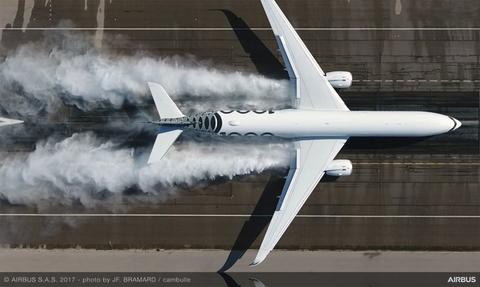
The A330neo takes to the skies
One aircraft in two sizes, the A330neo (new engine option) comes in two variants: the shorter A330-800 and the longer A330-900. Airbus developed a fast-paced development programme to bring the A330neo from launch to delivery.
Airborne flight tests began in October with the four-hour maiden flight of an A330-900, and the first A330-800 began final assembly in November, on track for its planned initial flight in mid-2018.
The A330neo is the latest generation in Airbus' market-leading A330 product line. Both variants are powered by a pair of Rolls-Royce Trent 7000 turbofan engines, feature optimised aerodynamic refinements along the wing profile, and Airspace by Airbus cabins.
The most visible new features of the A330neo are the wing span extensions that bring the aircraft to 64 meters tip-to-tip – almost four meters longer than the current generation of A330 aircraft – and the specially developed curved wingtip Sharklets that draw on A350 XWB technology and improve fuel efficiency in flight.
The larger A330-900 will accommodate up to 287 seats in a typical three-class layout, while the A330-800 typically will seat 257 passengers in three classes.
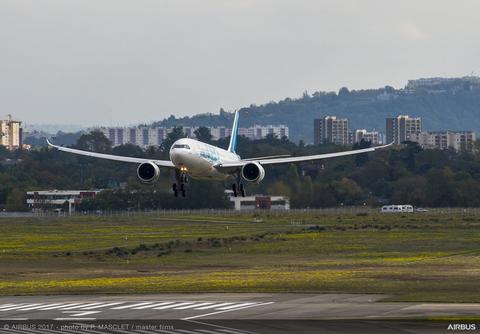
Major achievements for Airbus’ A320 Family
In March, Airbus performed the first flight of the A320 Family’s shortest-fuselage member in the NEO configuration, the A319neo, equipped with CFM International LEAP-1A engines (one of the two powerplants available for the NEO jetliners).
April saw the handover of the first-ever A321neo – the longest-fuselage member of the A320 Family – to Virgin America during a ceremony in Hamburg, Germany; this U.S.-based airline received the version equipped with CFM International’s LEAP-1A engines. Cathay Pacific Airways, meanwhile, finalised an order for 32 A321neo aircraft.
Taking delivery of its first A321neo, Japan’s All Nippon Airways became the launch operator of the aircraft’s version powered by Pratt & Whitney GTF™ engines.
Canadian airline Air Transat announced in July that it would become the first North American operator of the long-range version of the A321, denoted A321LR, starting in early 2019 with 10 aircraft leased from AerCap. The A321LR builds on the A321neo’s continued success, having captured over 80% of the market share with more than 1,400 orders to date. The LR option extends the aircraft’s range to a maximum of 4,000 nautical miles and brings with it a 30% reduction in operating cost compared to its nearest competitor.
At the Dubai Airshow in November, Airbus announced a historic Memorandum of Understanding for 430 A320neo Family jetliners negotiated by private equity firm Indigo Partners for operation by four ultra-low-cost airlines in its portfolio. The aircraft, destined for the fleets of Frontier Airlines of the U.S., JetSMART of Chile, Mexico’s Volaris, and Wizz Air of Hungary represent Airbus’ largest commercial jetliner announcement by aircraft numbers, while setting a company record of $49.5 billion value at list prices. A signed purchase agreement to finalise the deal followed in the closing days of the year.
Airbus A320 production and North America
With the third-quarter 2017 delivery of an A321 to American Airlines – the world’s largest operator of Airbus passenger aircraft – there were a record 1,500 in-service Airbus commercial aircraft in North America.
This milestone jetliner was produced at the Airbus U.S. Manufacturing Facility in Mobile, Alabama – which is one of four production centres worldwide for Airbus single-aisle aircraft (joining Toulouse, France; Hamburg, Germany; and Tianjin, China).
Located on the U.S. Gulf Coast, the Airbus U.S. Manufacturing Facility is able to build three members of the A320 Family: the A319, A320 and A321.
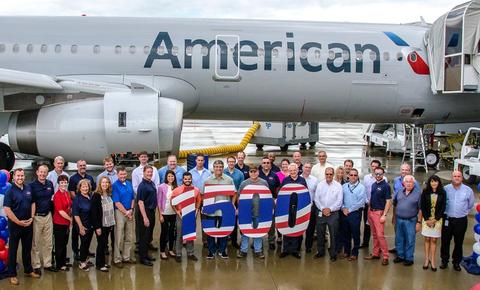
Tianjin: Airbus’ first wide-body centre outside Europe
Airbus inaugurated its A330 Completion and Delivery Centre, or C&DC, in Tianjin, China in September – the first wide-body centre outside of Europe.
Located at the same site as the Tianjin A320 Family Final Assembly Line and the Airbus Tianjin Delivery Centre, the C&DC was created to process twin-engine A330s, performing aircraft completion activities including cabin installation, aircraft painting and production flight test, as well as customer flight acceptance and aircraft delivery.
The Airbus A330 is the most popular wide-body aircraft in China and was flown by nine airlines in the country as of September. Coinciding with the CD&C’s formal opening, the first A330 to be delivered from the facility, an A330-200 version, was handed over to Tianjin Airlines.
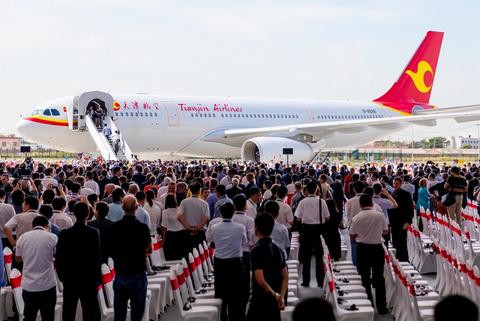
Commitment to eco-efficiency: sustainable bio-fuels
Reflecting its strong commitment to eco-efficiency, Airbus offers customers the option to have aircraft assembled at its Toulouse, France site delivered to them powered by a blend of both traditional fuel and sustainable biofuels.
In order to stock the eco-friendly product, the first-ever biofuel station was installed adjacent to the Airbus delivery centre in Toulouse by Air Total, Airbus’ partner in the sustainable fuel option for delivery flights.
A total of 21 bio-fueled aircraft have so far been delivered by Airbus since the facility was inaugurated in mid-2016, a clear demonstration of the commercial viability of sustainable fuel blends.
In addition to Toulouse, Airbus is working toward offering bio-fueled delivery flights from its facilities in Hamburg, Germany and Mobile, U.S.
The first deliveries from these sites are set to begin in 2018 and will subsequently become available from the company’s facility in Tianjin, China.
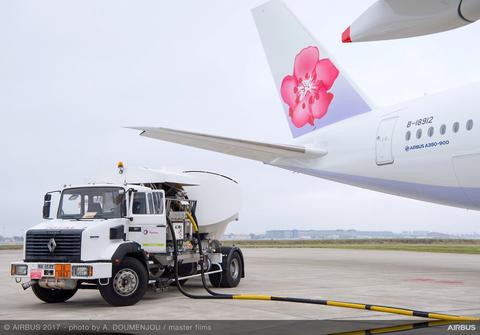
IranAir’s fleet modernisation begins with Airbus
Initial delivery activity in 2017 included the handover of IranAir’s first new aircraft, a single-aisle A321, which occurred at Airbus’ Toulouse, France industrial facility during January. It was the first delivery from a firm order placed by IranAir in December 2016 for 100 Airbus aircraft (46 single-aisle and 54 wide-body jetliners) to renew and expand its fleet.
Iran is forecast to require some 400-500 new aircraft to modernise and to grow its existing passenger fleet, meeting demand on domestic as well as international routes.
A “dynamic” business atmosphere at the Paris Air Show
Airbus’ market-leading product line received a strong endorsement during the Paris Air Show in June, with the company securing $39.7 billion of new orders – composed of firm bookings for 144 aircraft valued at $18.5 billion in catalogue prices, and Memoranda of Understanding for an additional 182 aircraft worth $21.2 billion.
With these transactions, Airbus’ backlog increased to a new industry record of more than 6,800 aircraft.
In addition, Airbus underscored its commitment to the continuous evolution of the company's jetliner product line with improvements for airline operators and the passengers they fly.
A developmental study for an enhanced A380 with even better economics and improved operational performance was unveiled at the biennial industry event, where Airbus also announced the extension of its “Airspace” cabin brand to the A320 Family.
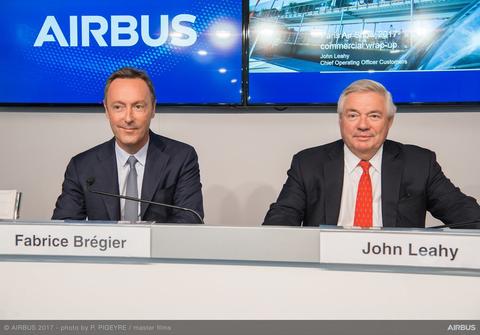
Growing horizons
In June, Airbus put a spotlight on aviation's future with the release of its latest Global Market Forecast (GMF), which projects a worldwide need for some 35,000 new passenger aircraft between 2017 and 2034.
This forecast – which serves as a reference for airlines, airports, investors, governments, non-government agencies and others – factors in such key market drivers as: demographics, trade, tourism flows, oil prices, environmental issues and competition.
Also included in the 2017-2034 Global Market Forecast are results from Airbus' "Global Services Forecast." Among its projections is a global maintenance, repair & overhaul (MRO) market with a cumulative value of more than US$1.85 trillion during the next 20 years.
BLADE: laminar flow research takes flight
In September, Airbus initiated the latest research for further reducing the fuel consumption of airliners to keep the company and Europe at the forefront of enhancing air transportation’s ecological footprint.
This research uses the Airbus A340 Flight Lab testbed aircraft, with its outer wing sections designed for highly smooth airflow over their surfaces. Known as natural laminar flow, such smoothed passage of air creates less drag than the airflow on traditional wings, potentially reducing fuel burn by as much 4.6% on an 800-nautical mile trip.
Designated as project BLADE – an acronym for Breakthrough Laminar Aircraft Demonstrator in Europe – this research effort utilises the first-ever A340 jetliner produced by Airbus, with its outboard wings replaced with approximately 10-meter-long laminar wing panels. These panels represent about two-thirds of the wing size on a short- or medium-range airliner, for which the laminar flow technology is deemed best suited.
BLADE is organised through Europe’s Clean Sky aeronautical research programme and involves 21 European partners with 500 contributors. During some 150 flight test hours, the BLADE testbed aircraft will collect an estimated 2,000 parameters.
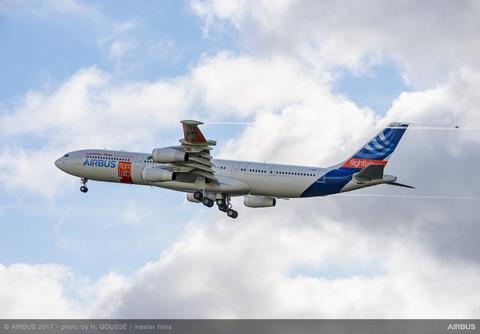
The Airbus A340 Flight Lab’s first takeoff equipped with outer wing sections designed for highly smooth airflow over their surfaces, a technology that won the prestigious 2018 Aviation Week Laureates Award for Commercial, Technology. Known as natural laminar flow, such smoothed passage of air creates less drag than the airflow on traditional wings, potentially reducing fuel burn.

